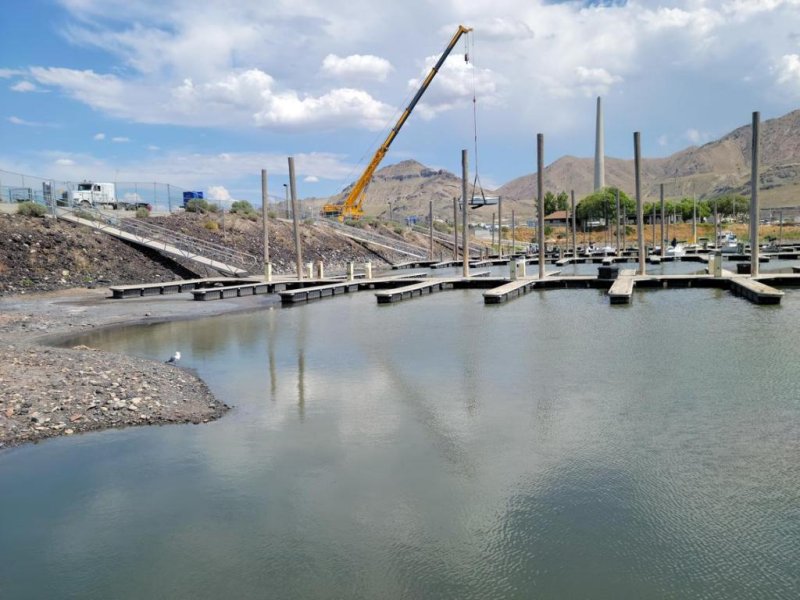
The U.S. Geological Survey announced the water level in the southern portion of Utah's Great Salt Lake receded to a historic low on Friday, July 23, 2021.
Photo courtesy of Andrew Freel/USGS
July 24 (UPI) -- The U.S. Geological Survey announced Saturday the southern portion of the Great Salt Lake in Utah reached it's lowest water level in recorded history.
The USGS released a statement Saturday saying information collected at the SaltAir gauge location found the water level on Friday averaged about an inch lower than the previous record of 4,191.4 feet, which was recorded in 1963.
The USGS said its records of Great Salt Lake elevations date back to 1847.
USGS Utah Water Science Center data chief Ryan Rowland said Friday's elevation is not likely to remain a record for long.
"Based on current trends and historical data, the USGS anticipates water levels may decline an additional foot over the next several months," Rowland said in the USGS statement. "This information is critical in helping resource managers make informed decisions on Great Salt Lake resources. You can't manage what you don't measure."
Researchers attributed the historic low to conditions including the low snowpack from last winter and the current hot and dry summer.
"While the Great Salt Lake has been gradually declining for some time, current drought conditions have accelerated its fall to this new historic low," said Brian Steed, executive director of the Utah Department of Natural Resources. "We must find ways to balance Utah's growth with maintaining a healthy lake. Ecological, environmental and economical balance can be found by working together as elected leaders, agencies, industry, stakeholders and citizens working together."
July 24 (UPI) -- The U.S. Geological Survey announced Saturday the southern portion of the Great Salt Lake in Utah reached it's lowest water level in recorded history.
The USGS released a statement Saturday saying information collected at the SaltAir gauge location found the water level on Friday averaged about an inch lower than the previous record of 4,191.4 feet, which was recorded in 1963.
The USGS said its records of Great Salt Lake elevations date back to 1847.
USGS Utah Water Science Center data chief Ryan Rowland said Friday's elevation is not likely to remain a record for long.
"Based on current trends and historical data, the USGS anticipates water levels may decline an additional foot over the next several months," Rowland said in the USGS statement. "This information is critical in helping resource managers make informed decisions on Great Salt Lake resources. You can't manage what you don't measure."
Researchers attributed the historic low to conditions including the low snowpack from last winter and the current hot and dry summer.
"While the Great Salt Lake has been gradually declining for some time, current drought conditions have accelerated its fall to this new historic low," said Brian Steed, executive director of the Utah Department of Natural Resources. "We must find ways to balance Utah's growth with maintaining a healthy lake. Ecological, environmental and economical balance can be found by working together as elected leaders, agencies, industry, stakeholders and citizens working together."

No comments:
Post a Comment